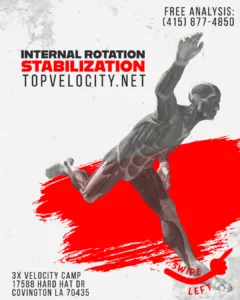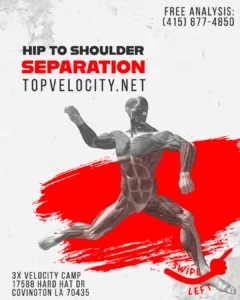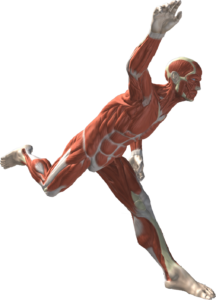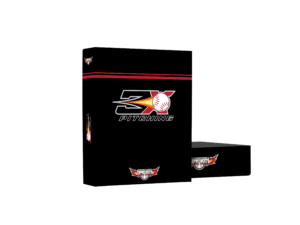Ready to throw with elite front leg pitching mechanics? A strong, stable front leg not only assists pitchers in successfully transferring momentum, but also provides a solid foundation for the complete pitching motion. In this article, we'll look at the science and mechanics of improving front leg performance, such as optimal landing positions, pre-activation, and power generation. We will cover front leg pitching mechanics using Brent's insightful video from TopVelocity.net to enhance your throwing speed and precision on the mound.
Recognizing the connection between ground force and ball velocity is the first step in understanding the significance of front leg mechanics. According to research, the power exerted by the front leg has a strong correlation with the speed of the pitch. As a result, both coaches and athletes have been giving closer attention to this aspect of pitching mechanics. We will break down the key components that contribute to a powerful front leg in the following sections, including appropriate landing positions, the role of the back leg and trunk, and the importance of power output in achieving high-velocity throws.
Here is some key takeaways from the article on Mastering Front Leg Mechanics:
- Ideal landing positions and stability are crucial for efficient power transfer in front leg pitching mechanics.
- A passive front leg during the initial stages of the pitch allows for better pre-activation of the quad and calf muscles, enhancing stability upon landing.
- Proper back leg drive and hip rotation contribute to the front leg's stability and power, supporting overall pitching performance.
- Trunk movement plays a significant role in facilitating hip abduction and front leg extension, impacting the power and accuracy of the pitch.
- Power production and extension in the front leg are essential for maximizing pitching velocity within a brief two-tenths of a second window.
- Attending a 3X Velocity Camp can help pitchers develop elite mechanics, potentially adding 5-10+ mph to their fastball and improving overall performance.
Landing Positions and Stability: Setting the Stage for Power Transfer
 To maximize the efficacy of front leg mechanics in pitching, the ideal landing position must be achieved. When a pitcher's foot hits the ground, it should be about seven inches inside the drive line and inclined about 20 degrees closed. The femur is slightly across the hips in this landing position, providing for a stable pivot point in the center of the pelvis as the hips rotate. A solid landing position serves to lock the hips down and direct them towards the target, laying the groundwork for the remainder of the pitching motion.
To maximize the efficacy of front leg mechanics in pitching, the ideal landing position must be achieved. When a pitcher's foot hits the ground, it should be about seven inches inside the drive line and inclined about 20 degrees closed. The femur is slightly across the hips in this landing position, providing for a stable pivot point in the center of the pelvis as the hips rotate. A solid landing position serves to lock the hips down and direct them towards the target, laying the groundwork for the remainder of the pitching motion.
An incorrect landing posture can reduce the pitch's effectiveness and accuracy. If the foot falls too close to the ground, the hips will be unable to completely rotate, causing the pitcher to pull the ball across their body. Landing with the foot too open, on the other hand, can cause hip instability, reducing pitch force and control. Maintaining stability and assuring optimal power transfer from the lower to upper body requires striking the right balance in landing posture.
To prevent interfering with the back leg's work, the front leg should stay passive during the first stages of the pitch. When the front limb is overly active, it can shift weight to the back leg, reducing its ability to power off the rubber. A passive front leg also provides for better pre-activation of the quad and calf muscles, which are required for landing stability. When the pitcher's front foot makes contact with the earth, this pre-activation allows them to withstand forces of up to 250 percent of their body weight.
To summarize, correct landing posture and front leg stability are critical in establishing the stage for efficient power transfer during a pitch. Pitchers can improve their general performance on the mound by focusing on these elements of front leg mechanics, resulting in higher-velocity throws with greater accuracy and consistency.
The Role of Back Leg Drive and Trunk Movement in Front Leg Mechanics
 During a pitch, the back limb drive and trunk movement play an important part in optimizing front leg mechanics. When a pitcher propels themselves off the rubber, the back leg drive generates momentum and force, which is then transferred to the front limb. As the hips continue to rotate, proper back leg drive and hip rotation ensure that the front hip moves back, producing stability in the front leg.
During a pitch, the back limb drive and trunk movement play an important part in optimizing front leg mechanics. When a pitcher propels themselves off the rubber, the back leg drive generates momentum and force, which is then transferred to the front limb. As the hips continue to rotate, proper back leg drive and hip rotation ensure that the front hip moves back, producing stability in the front leg.
Aside from back limb drive, trunk movement is important for facilitating hip abduction and supporting front leg extension. If the trunk is not being pulled into rotation but rather forward, it can help lift the hips up in abduction, allowing the front limb to extend more efficiently. This forward trunk movement, combined with hip abduction and rotation, adds to the front leg's overall power and stability during the pitching motion.
In contrast, improper trunk movement can have a negative effect on front leg mechanics. If the glove side of the trunk pulls excessively, it can impede hip abduction and rotation, affecting front limb stability and extension. To optimize the efficiency of their front leg mechanics, pitchers must ensure that their trunk movement is well-coordinated with the motion of their hips and legs.
To summarize, back limb drive and trunk action are critical components of pitching front leg mechanics. Pitchers can improve their stability, power transfer, and overall performance on the mound by concentrating on the correct coordination of these elements. Developing a strong back leg drive and controlled trunk action not only leads to more powerful pitches, but it also allows a pitcher to keep consistency and precision in their throws.
Power Production and Extension: Maximizing Velocity in a Fraction of a Second
 Power production and front leg extension are important factors in maximizing pitching velocity in a brief period of time. A pitcher has only two-tenths of a second after landing to unleash the pitch, which is less time than it takes to blink an eye. During this short window, the front leg must have enough strength to stop up to 250 percent of the pitcher's body weight while also extending back into momentum to deliver a high-velocity pitch.
Power production and front leg extension are important factors in maximizing pitching velocity in a brief period of time. A pitcher has only two-tenths of a second after landing to unleash the pitch, which is less time than it takes to blink an eye. During this short window, the front leg must have enough strength to stop up to 250 percent of the pitcher's body weight while also extending back into momentum to deliver a high-velocity pitch.
The strength and conditioning of a pitcher's lower body have a significant impact on power production in the front limb. Training exercises that target the quadriceps, calves, and hips can help improve the power capacity of the front leg, allowing a pitcher to handle the intense forces applied during the pitching motion. A strong foundation of power is needed for athletes to sustain the rapid extension and stability required in high-velocity pitches.
A pitcher's ability to produce enough power in their front leg can be influenced by a number of factors. If the pitcher's back leg is not correctly loaded, they may struggle to retain momentum and end up extending vertically rather than linearly. Furthermore, if the pitcher does not have enough forward momentum, they may have trouble effectively transferring their energy over their front side. Pitchers must concentrate on optimizing their back leg drive, trunk movement, and general pitching mechanics to optimize power production and extension.
To summarize, power production and front leg extension are critical components for accomplishing high-velocity throws in a fraction of a second. Pitchers can successfully harness the power of their front leg to produce faster and more accurate pitches on the mound by building a solid foundation of lower body strength and refining their pitching mechanics. Concentrating on these elements of front leg mechanics will help pitchers not only increase their throwing velocity, but will also improve their general performance and consistency in the game.
Take Your Pitching to the Next Level: Attend a 3X Velocity Camp Today!
 Are you eager to improve your pitching abilities and increase your fastball velocity by 5-10 mph? Don't pass up the chance to join a 3X Velocity Camp, where you'll get expert advice on building elite front leg mechanics and other important aspects of high-velocity pitching. Our knowledgeable coaches and trainers will guide you through the methods and routines required to improve your power, stability, and accuracy on the mound.
Are you eager to improve your pitching abilities and increase your fastball velocity by 5-10 mph? Don't pass up the chance to join a 3X Velocity Camp, where you'll get expert advice on building elite front leg mechanics and other important aspects of high-velocity pitching. Our knowledgeable coaches and trainers will guide you through the methods and routines required to improve your power, stability, and accuracy on the mound.
Hands-on instruction, personalized input, and tailored drills intended to hone your pitching mechanics will be provided at the 3X Velocity Camp. You'll learn how to improve your landing positions, back leg drive, and trunk movement, as well as your power output and front leg extension. You'll be well on your way to throwing faster and more powerful fastballs if you master these key components.
Don't pass up this opportunity to join other dedicated athletes who are committed to improving their pitching ability. Attending a 3X Velocity Camp could be the game-changing experience you need to transform your pitching skills and advance your baseball career. Register for a 3X Velocity Camp today to take the first step toward reaching your pitching goals. Unleash your complete potential and turn yourself into the high-velocity pitcher you've always wanted to be!


